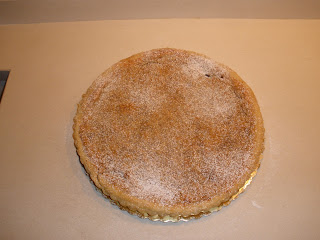My friend and country neighbor, Rosario, and I got to talking about chickens the other day. Rosario is a small town, entreprenurial small business owner. He owns a carwash on a highway that's heavily travelled, especially in summer when people flock to our beautiful Mediterranean coast. He's adding on a gas station and café this year but his heart and home are in the country, 3 miles up the hill. Rosario rises when dawn breaks to plow his fields, plant wheat, cure his vineyard, tie up the tomato plants. Then goes to work. Like many around here, he was raised in the country. Most have a “real” job but tend a small plot of land and a few barnyard animals. It’s those small plots of land, new plants, effects of the changing weather, that elicit passionate conversations. The question when people meet isn’t “how are you?”, it’s “what have you planted this year?” Rosario glows when he talks about whatever farm task he’s done that morning. The day we spoke about chickens, he said he likes the pigs and goats but he really likes poultry. He dreams of adding geese and ducks to his henhouse.
As country neighbors often do, Rosario helps us out with different things. His birthday was coming up, and I wanted to give him a special gift but what? Then it came to me: eggs for some kind of fancy chicken. A Google search turned up a breeder of Araucana chickens not far from here. An e-mail exchange, a couple phone calls, and a short road trip, and I was in possession of seven small blue eggs and two large brown cross-bred eggs.
Personally, I’d like to have chickens for the fresh eggs, but my visit to the breeder left me enthusiastic. These birds are beautiful. Their black and amber feathers shine as if they’d been oiled, and unlike the few gawky white chickens I’ve seen, the Araucana are graceful. They were brought to Europe from South America in the 1800’s. Their colored feathers and regal bearing brought to mind old photos of indigenous tribal leaders with feathered headpieces.
I placed the eggs in a nice box closed with a ribbon and took it to Rosario at the carwash. It was almost a week before his birthday but the eggs needed to be put under a brood hen or in an incubator within 15 days after being laid. I was excited about my gift, thinking I’d had a perfect idea. Rosario opened the box, smiled, and thanked me as good manners demand, but I detected perplexity. Around here, rarely does anyone reproduce their own chickens; they buy chicks, not eggs. The farm boy asked me what he was supposed to do.
I’d seen a couple DIY incubators on the web. The easiest seemed to be a light bulb and thermometer in a Styrofoam box, so I mentioned that. I suggested asking around for someone who has a hen that’s brooding that he could borrow. Each day that followed Rosario called me with another question, I won’t go so far as to say he was agitated like a headless chicken…but almost.
Days passed and it was looking more and more like those pretty blue eggs were going to end up in a frying pan. I felt bad that my gift had created a problem.
Rosario called again and said his mother had a hen that looked like she was going to brood. Don’t ask me how you tell. The next day, which was Rosario’s birthday, I ran into his mom, “oohh, the hen sat on the eggs,” she told me, with a big smile. When I saw Rosario later, he was his relaxed, happy with farm life self again. With a glint in his merry eyes, he told me it was the smallest hen who’d sat on the eggs. He hadn’t thought she’d be able to cover them all but somehow expanded once she’d settled in, and there she sits. She just knew what to do. In 21 days those little chicks will have a mother hen to teach them how to peck stones and drink water.
Maternal instincts, Rosario and I agreed, both of us nodding in a silent pause of reflection at the wonder and beauty of Mother nature. Rosario broke the reflective silence: “If it goes well, I want to get more eggs. What else does that breeder have?”




